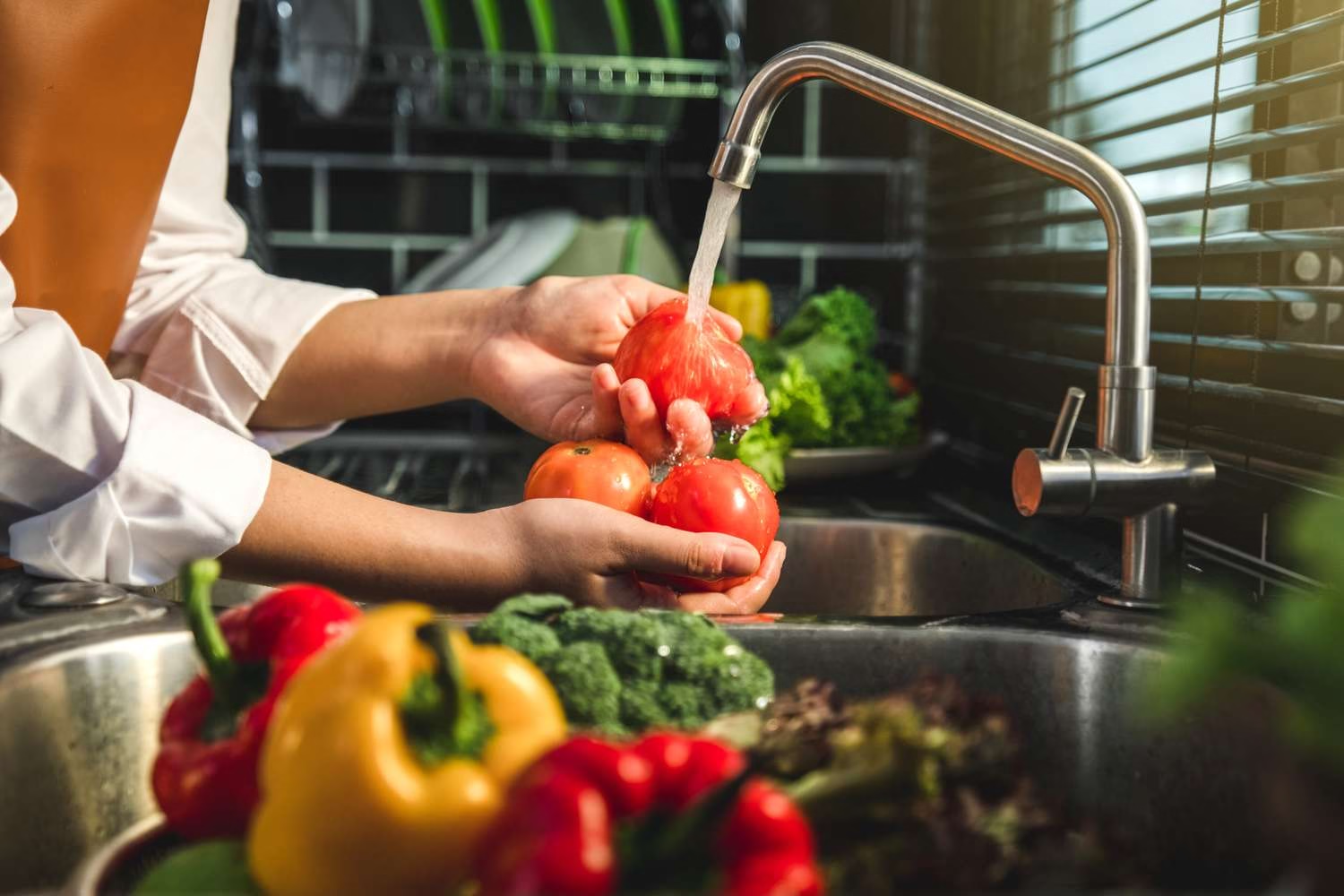We all know that eating healthy fruits and vegetables is key to a balanced diet. They’re packed with vitamins, minerals, antioxidants, and fiber that support immunity, energy, and long-term health. But what many people forget is that fresh produce can also carry dirt, bacteria, pesticides, and even harmful residues if not washed properly.
A quick rinse under running water may seem enough, but the way you clean your fruits and vegetables matters more than you think. Poor washing habits can not only leave harmful residues behind but also shorten the shelf life of your produce.
Here are 7 common mistakes people make when washing fruits and vegetables—and how to avoid them.
- Using Only a Quick Rinse
The most common mistake is simply holding produce under the tap for a few seconds. While this removes some visible dirt, it doesn’t get rid of bacteria, wax, or pesticide residue that often clings to the surface.
✅ Tip: Gently rub the surface of fruits and vegetables under running water for at least 20 seconds. For firmer produce like apples or cucumbers, use a soft produce brush.
- Using Soap or Dish Detergent
Some people think washing produce with soap or dish liquid will make them cleaner. In reality, these products are not safe for consumption. Fruits and vegetables can absorb the chemicals, leading to potential stomach irritation or worse.
✅ Tip: Stick to plain running water. If you want extra cleaning power, make a DIY solution with vinegar (1 part vinegar to 3 parts water) to soak your produce for a few minutes before rinsing.
- Not Washing “Pre-Washed” Produce
Many packaged salads, berries, or leafy greens are labeled as “pre-washed” or “ready-to-eat.” While they’ve gone through initial cleaning, handling during packaging and transport can still introduce contaminants.
✅ Tip: Always give “pre-washed” items a quick rinse before eating, just to be safe.
- Ignoring Firm-Skinned Fruits and Vegetables
People often assume that thick-skinned produce like melons, oranges, or avocados don’t need washing since the skin is peeled away. But cutting into unwashed produce can transfer bacteria from the surface to the edible interior.
✅ Tip: Wash even thick-skinned fruits and vegetables thoroughly before peeling or slicing.
- Not Cleaning Leafy Greens Properly
Leafy greens such as spinach, lettuce, and kale are highly nutritious but can trap dirt, sand, and bacteria in their folds. Simply rinsing the outer leaves won’t remove hidden contaminants.
✅ Tip: Separate the leaves and wash them individually in a large bowl of water. Swish them around to loosen dirt, then drain and rinse again.
- Skipping Drying After Washing
Leaving fruits and vegetables wet after rinsing encourages bacterial growth and mold. Many people wash produce and store it damp in the refrigerator, which reduces freshness and shelf life.
✅ Tip: Pat fruits and vegetables dry with a clean towel or use a salad spinner for leafy greens. Dry produce lasts longer and stays safer to eat.
- Not Washing Before Storage
Some people wash produce immediately after buying, while others prefer to wash right before eating. Washing everything in advance and storing it damp can accelerate spoilage, especially for delicate berries.
✅ Tip: Store unwashed produce in breathable bags or containers. Wash just before eating, except for leafy greens that you can wash, dry, and store properly in a paper towel-lined container.
Bonus: Don’t Forget Your Hands and Kitchen Tools
Even the cleanest produce can become contaminated if your hands, knives, or cutting boards aren’t hygienic. Always wash your hands for 20 seconds before handling healthy fruits and vegetables, and clean all kitchen tools with hot, soapy water.
Final Thoughts
Washing produce properly is one of the simplest ways to keep your healthy fruits and vegetables safe and enjoyable. By avoiding these 7 common mistakes—using only a quick rinse, relying on soap, ignoring firm-skinned produce, skipping drying, and others—you can protect your health, reduce food waste, and extend the freshness of your groceries.
The next time you prepare a colorful fruit salad or a fresh vegetable stir-fry, remember that how you wash your food is just as important as eating it. After all, clean produce is the first step toward clean eating.
